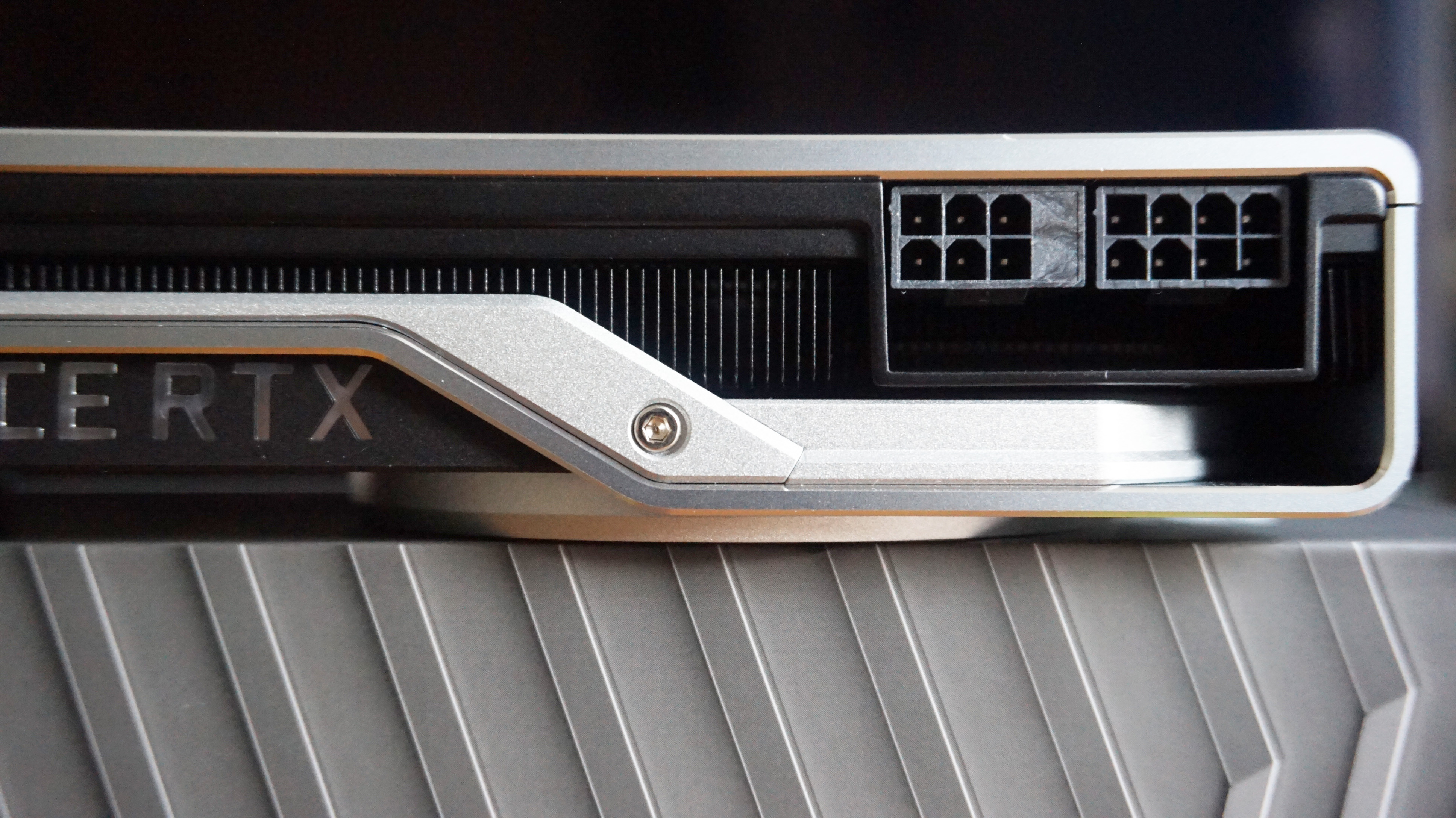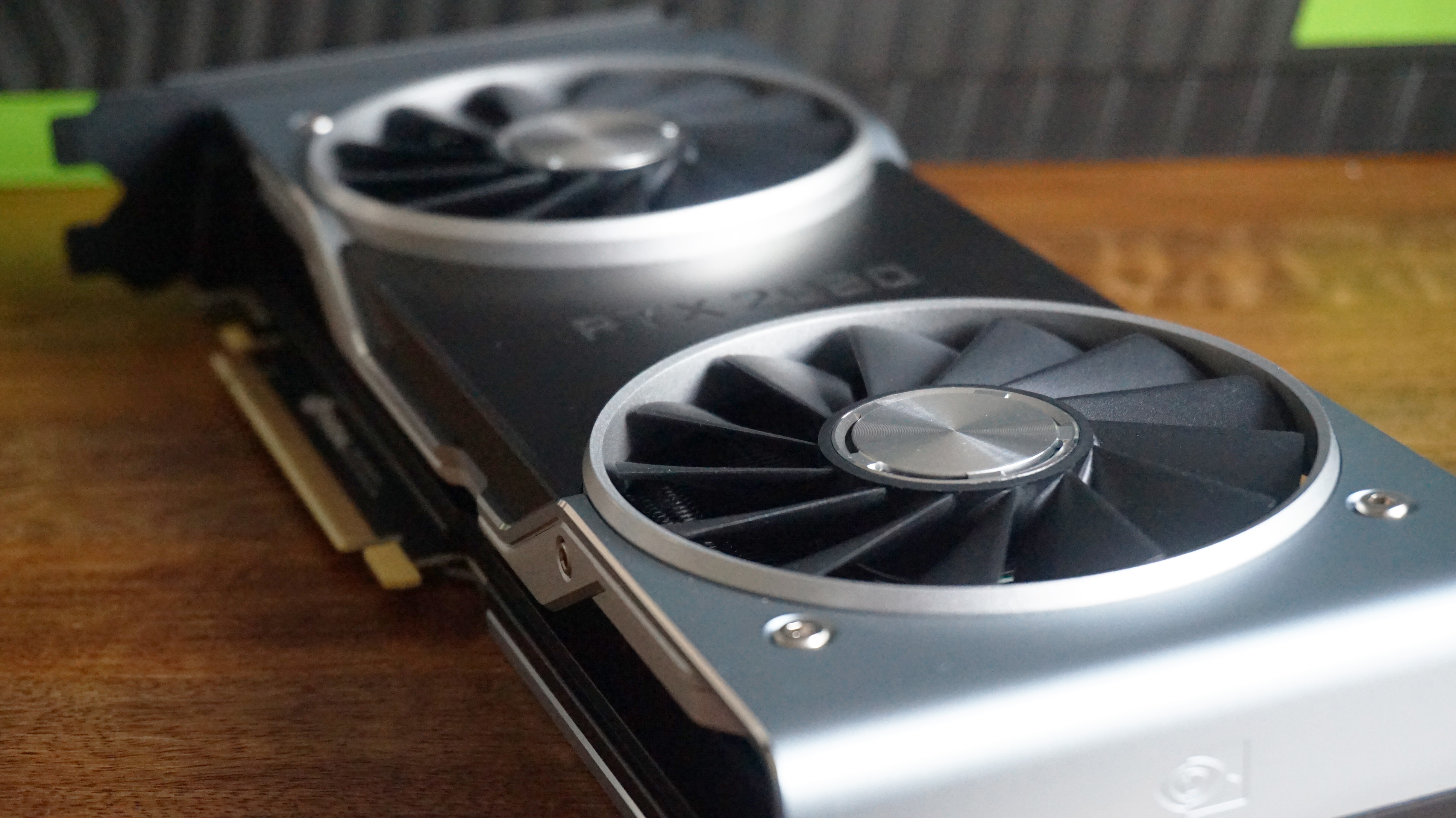
This time tomorrow, the Nvidia GeForce RTX 2080 can have lastly arrived. There’s been loads of fanfare round its fairly nifty ray-tracing tech, to not point out all the opposite cool issues Nvidia’s Turing playing cards can do, however is it actually the best graphics card of all time? At the second, it’s arduous to say – exterior of a few demos, there aren’t truly any games that assist ray-tracing or Nvidia’s fancy AI-drive DLSS tech but, so that you’ll have to attend just a little bit longer earlier than I can provide a correct verdict on a) whether or not these options are literally any good and b) how they have an effect on the cardboard’s efficiency. Square Enix have but to patch within the RTX replace for Shadow of the Tomb Raider, as an example, and Final Fantasy XV remains to be awaiting its DLSS replace.
I’ll be including some ideas about these aforementioned demos to this review-in-progress early subsequent week, however as we speak I assumed I’d concentrate on the one factor everybody’s been clamouring to listen to about ever because the RTX 2080 was first introduced at Gamescom. How quick is it, how significantly better is it than the GTX 1080, and is it actually value spending £715 / $750 on?
To assist reply these questions, I’ve bought the Founders Edition of Nvidia’s RTX 2080. For these of you who like numbers on the market, the following two paragraphs are for you. Like all RTX 2080 playing cards you’ll be capable of purchase quickly, you’ll discover 8GB of GDDR6 reminiscence right here that may ship a large 448GB/s of reminiscence bandwidth, in addition to 2944 CUDA cores and a base clock velocity of 1515MHz. Where this card differs from the reference spec is its increase clock velocity, which has been raised from 1710MHz to 1800MHz.
As a outcome, Nvidia say this enables the Founders Edition of the RTX 2080 to ship 60 trillion RTX operations/second, in comparison with the reference spec’s 57 trillion. That’s to not say the Founders Edition is essentially the very best RTX 2080 on the market, nevertheless, as third get together playing cards may also offer their very own factory-overclocked speeds as they turn into obtainable. I’ll be testing a few these over the following few weeks to see how they examine, however the figures under ought to nonetheless provide you with a reasonably good thought of what to anticipate by way of uncooked efficiency improve.
In phrases of what these numbers truly imply with regards to enjoying games, there’s each excellent news and unhealthy information. The excellent news is that in case your present graphics card – an Nvidia GeForce GTX 1070, say, and even an Nvidia GeForce GTX 1070Ti – is struggling to play the most recent games like Final Fantasy XV, Monster Hunter World and Shadow of the Tomb Raider at 4K on mid-to-high settings, the RTX 2080 achieved just about prime marks throughout my complete benchmarking suite on this respect with solely a few very minor compromises.
The unhealthy information is that you simply won’t be capable of get the toppest prime marks if the remainder of your PC is beginning to present its age. I examined the RTX 2080 with my common setup comprised of an Intel Core i5-8600Ok, 16GB of RAM, an 850W energy provide (Nvidia recommends having not less than a 650W PSU, in case you don’t have already got one), and an Asus Prime X370-P motherboard, and even I skilled some CPU-related bottleneck issues when it got here to amassing my benchmark outcomes.
As such, the outcomes under won’t be fairly as nippy as you’ll see elsewhere across the interweb, so it’s most likely value doing a little bit of studying round to see if higher-spec PCs produce considerably completely different outcomes. Either method, for those who ain’t bought an Intel Coffee Lake Core i7 or an AMD Ryzen 7 2700/2700X sitting in your PC proper now, you may need to take into consideration getting one for those who’re contemplating shopping for both the RTX 2080 or its even beefier brother, the RTX 2080Ti.
Still, I can solely work with what I’ve bought, and actually, I might have hoped a prime of the road Core i5 would have proved an honest sufficient accomplice for it. In equity, the obvious place the bottle-necking reared its head was once I was testing the cardboard at 1920×1080, the place it typically delivered nigh-on an identical body charges as my 2560×1440 outcomes.
This isn’t a huge drawback so far as I’m involved, as there are many cheaper graphics playing cards on the market that may already do max settings at 1080p completely nicely with out forcing you to drop north of 700 large ones on it. Cards just like the Nvidia GeForce GTX 1060 or AMD Radeon RX 580. Those are each greater than sufficient for getting the very best out of 1920×1080 displays, and neither of them will empty your checking account within the course of.
However (and it is a a lot larger drawback for potential RTX 2080 consumers), I additionally suspect my Core i5 had a task to play in my 4K outcomes as nicely, as there have been a number of events the place it both did not exceed the speeds I’ve recorded from Nvidia’s GeForce GTX 1080Ti, or solely went a teensy bit sooner on the identical graphics settings.
Perhaps it’s unfair to pit these playing cards in opposition to one another when the non-Ti model of the GTX 1080 is the direct predecessor of the RTX 2080, however when the GTX 1080Ti can produce just about the identical outcomes for barely much less cash at £600 / $700 (with much more potential financial savings if GTX 1080Ti costs begin coming down within the wake of Nvidia’s RTX playing cards), anybody who couldn’t care much less about Nvidia’s fancy Turing options may probably save themselves a good chunk of change in the event that they, too, solely have a Core i5 CPU.
I’ll, after all, be re-testing all of the games talked about under with both a Core i7 or Ryzen 7 to see what the RTX 2080 is de facto able to as soon as I can get my arms on one, however for now, that is what you possibly can anticipate with a Core i5.
Let’s speak body charges. Across the board, the RTX 2080 proved itself a extremely succesful card that’s bought greater than sufficient chops for 4K gaming on excessive graphics settings, in addition to a really admirable accomplice for these after max settings at greater refresh charges additional down the decision scale. The solely drawback is that, for Core i5 PC house owners not less than, the GTX 1080Ti affords a close to an identical expertise for much less cash.
In Hitman, for instance, the RTX 2080 breezed by way of Agent 47’s Paris catwalk benchmark with a median body charge of 78fps on Ultra at 4K, and even hitting a median of 93fps on Ultra at 1440p. That’s a few frames forward of the GTX 1080Ti, however highly-optimised games akin to Doom and Wolfenstein II confirmed even larger positive factors. Here, the RTX 2080 was hitting as much as 120fps in each shooters on max settings at 4K, whereas the GTX 1080Ti typically maxed out across the 100fps mark. Neither of those outcomes can be a lot use for those who solely have a 60Hz monitor, after all, however these with greater refresh charge screens might recognize the additional leeway.
Elsewhere, nevertheless, the 2 playing cards have been just about neck-and-neck at each 4K and 1440p. In Assassin’s Creed Odyssey, for instance, the RTX 2080 managed a really respectable 52fps common on Ultra High at 4K in its inside benchmark, however the GTX 1080Ti was proper alongside it with its common of 51fps. What’s extra, the GTX 1080Ti truly pulled forward at 1440p, reaching a median of 79fps on Ultra High in contrast with the RTX’s 71fps.
This wasn’t the one game the place the GTX 1080Ti bought the higher hand, both, as each The Witcher III and Final Fantasy XV noticed Nvidia’s earlier gen card pip the RTX 2080 to the body charge put up. In The Witcher III, the GTX 1080Ti hit a stable 60fps on Ultra at 4K in comparison with the RTX 2080’s occasional dips right down to 50fps, whereas Final Fantasy XV noticed a fair larger hole begin to emerge.
At 4K, the GTX 1080Ti managed a gradual 45-47fps on Highest with all of Nvidia’s fancy graphics results turned off, whereas the RTX 2080 may solely get between 40-43fps on the identical settings. That won’t sound like a lot, however each body counts within the bizarre no man’s land between 30 and 60fps, and dropping all of it right down to High noticed one other win for the GTX 1080Ti, which achieved a a lot smoother 50-55fps sans Nvidia results in comparison with the RTX 2080’s 40-45fps.
At 1440p, the gulf grew even larger as nicely. Here, Noctis and buddies may romp across the plains of Duscae at 55-60fps on the GTX 1080Ti with all of Nvidia’s tremendous graphics switched on at Highest, however the RTX 2080 may solely match that velocity once I disabled the intensive VXAO possibility. Otherwise, our anime boy band have been trundling alongside at simply 45-58fps.
The RTX reclaimed some floor in Middle-earth: Shadow of War, coming in with averages of 55fps on Ultra at 4K and 91fps on Ultra at 1440p, however the GTX 1080Ti wasn’t precisely far behind with its respective averages of 51fps and 86fps. The similar goes for Total War: Warhammer II as nicely (one other CPU intensive game), the place each playing cards managed a median of 42fps throughout 4K Ultra-fied battle scenes, and 75fps averages with the identical settings at 1440p.
All this moderately factors to the GTX 1080Ti being the higher purchase for 4K gaming in the intervening time, and for those who’ve bought a mid-range PC with no intention of upgrading your CPU any time quickly, I’d be inclined to agree. After all, why spend extra on a card you possibly can’t get the very best out of, when you can get a barely cheaper one which plugs straight right into a Core i5 PC and will get simply nearly as good efficiency?
In the longer run, all of it will get a bit messier. What I’ve simply described above is, after all, uncooked efficiency speeds with a Core i5. I’ve but to check it with a greater CPU, which can nicely make a stronger case for leaning RTX-wards as a substitute of GTX-wards, and I additionally haven’t taken under consideration any of Nvidia’s intelligent Turing options, both, largely as a result of they merely don’t exist in an precise game but. Once we begin to see extra RTX-ified games coming by way of (significantly ones that assist Nvidia’s AI-driven DLSS anti-aliasing and variable shading speed-boosting strategies, too), then the RTX 2080 might nicely begin to make a fair stronger case for dropping £715 / $750 on it over the £600 / $700 GTX 1080Ti no matter what CPU you’ve bought in your PC. It’s simply too early to say proper now.
As for these nonetheless gaming at 2560×1440, the RTX 2080 is very large overkill regardless of which method you slice it. If that is your goal decision and your monitor’s refresh charge doesn’t go any greater than 60Hz, do your self and your pockets a favour and simply purchase a GTX 1060 or an RX 580 for those who don’t thoughts an excessive amount of about what graphics settings you’ve, or a GTX 1070 for those who’re a bit pickier about stuff trying good (or a GTX 1070Ti for those who’re actually choosy). You’ll nonetheless have nice trying games at good speeds with these playing cards, and also you needn’t bankrupt your self within the course of both.
Overall, my verdict proper now’s to take a seat tight for those who’re out there for a 4K graphics card – each by way of pricing to see whether or not the GTX 1080Ti receives any form of substantial worth reduce to make it even higher worth for cash, and whether or not testing its fancier RTX cousin with a greater CPU will make any form of compelling distinction to the 2080’s general efficiency. Watch this house.






